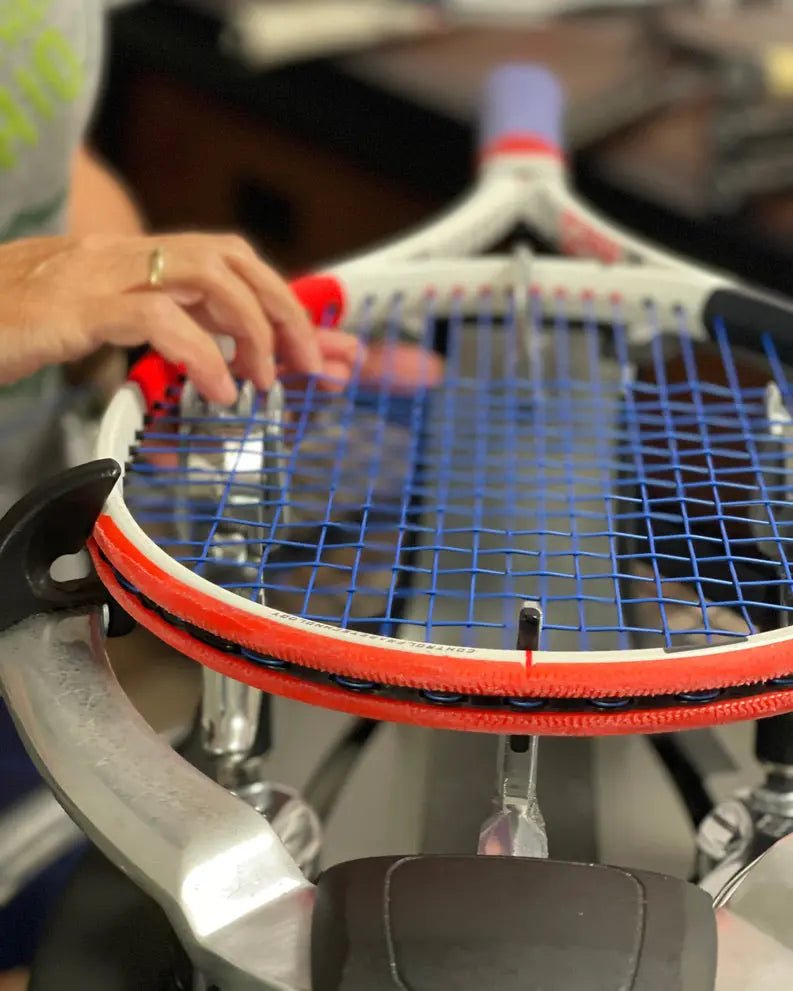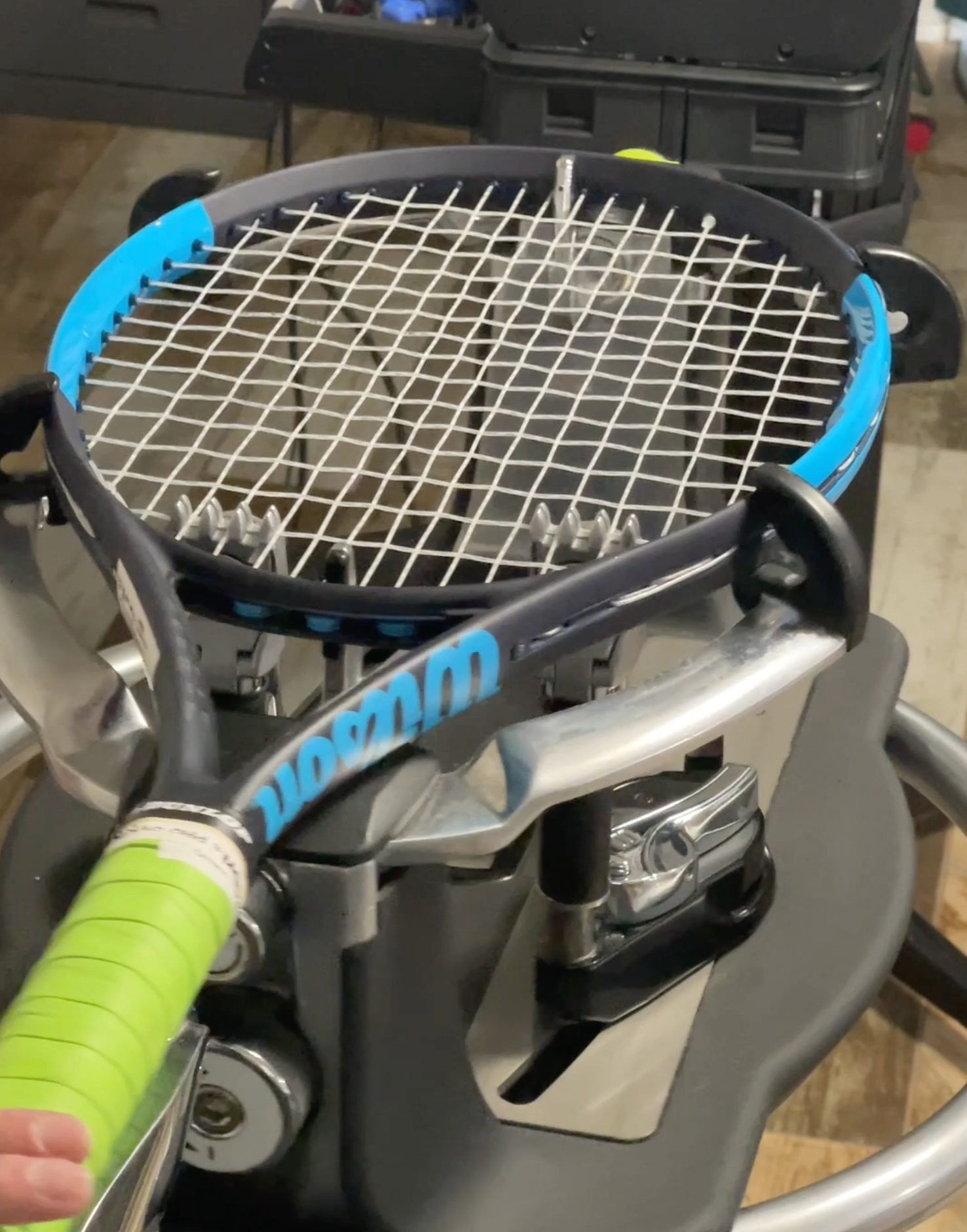Discover the fascinating journey of tennis racquets, from their humble origins in wood to the cutting-edge technology that powers today's game. Over the years, tennis racquets have undergone a remarkable evolution, mirroring the advancements in materials, design, and engineering. Gone are the days of wooden frames that required delicate finesse and precision. In their place, we now have racquets crafted from space-age materials, engineered for power, control, and maneuverability. This revolution in tennis equipment has not only transformed the way the game is played but has also reshaped the strategies and techniques employed by professional players. Join us and learn with Racquet Point as we delve into the history of tennis racquets, exploring the innovations and breakthroughs that have propelled the sport to new heights. From the wooden racquets of the past to the modern marvels that grace the hands of top-ranked players, this is the captivating tale of the evolution of tennis racquets.
Early tennis racquets: wooden construction and limited technology.
In the early days of tennis, racquets were made primarily from wood. These wooden racquets were simple in design, with a handle and a round frame strung with natural gut strings. The frames were typically made from ash or maple wood, which provided a solid but flexible structure. The natural gut strings offered a combination of power and control, allowing players to hit with precision.
However, these wooden racquets had their limitations. They were heavy, weighing around 400 to 500 grams, which made them difficult to maneuver quickly. The small head size also meant that the sweet spot was relatively small, requiring players to have impeccable timing and technique. Despite these limitations, wooden racquets remained the standard for many years, until the introduction of composite materials revolutionized the sport.
The transition to composite materials and the birth of modern tennis racquets.
The transition from wooden racquets to composite materials marked a significant turning point in the evolution of tennis racquets. In the 1960s, aluminum and steel frames were introduced, offering lighter weight and increased durability. These racquets allowed for greater power and maneuverability, enabling players to generate more speed and spin on their shots.
However, it was the introduction of graphite in the 1970s that truly revolutionized tennis racquets. Graphite, a lightweight and strong material, allowed for the creation of racquets that were both powerful and maneuverable. The first graphite racquets were made by laminating thin layers of graphite onto a foam core, creating a lightweight and stiff frame. This new construction method provided players with enhanced control and power, as well as improved shock absorption.
The birth of modern tennis racquets also saw the introduction of larger head sizes. The traditional wooden racquets had small head sizes, typically around 65 to 85 square inches. The larger head sizes of modern racquets, ranging from 95 to 130 square inches, increased the size of the sweet spot, making it easier for players to hit the ball cleanly. This change in racquet design had a profound impact on the game, allowing players to hit shots with more power and spin.

The role of technology in improving tennis racquet performance.
Technology has played a crucial role in the continuous improvement of tennis racquet performance. With advancements in materials, design, and engineering, racquet manufacturers have been able to create racquets that are lighter, stiffer, and more aerodynamic.
One of the key advancements in racquet technology is the use of carbon fiber composites. Carbon fiber is an incredibly strong and lightweight material that provides excellent power and control. By strategically placing carbon fibers within the frame, manufacturers can fine-tune the racquet's performance characteristics, such as stiffness and flex. This allows players to customize their racquets to suit their individual playing style.
Another technological advancement is the introduction of dampening systems. These systems, usually made of materials like silicone or rubber, are integrated into the racquet's handle or frame to reduce vibrations and absorb shock. By minimizing vibrations, players experience less fatigue and discomfort during long matches, allowing them to maintain their performance at a high level.
Furthermore, advancements in string technology have also contributed to the improvement of racquet performance. Modern tennis strings are made from synthetic materials like polyester or nylon, which offer increased durability and control. The choice of string tension and gauge also plays a significant role in the racquet's performance, allowing players to fine-tune their shots to their liking.
The evolution of racquet design: head size, weight, and string patterns.
The evolution of tennis racquets has not only been marked by advancements in technology but also by changes in racquet design. Today's racquets come in a variety of head sizes, weights, and string patterns, allowing players to choose a racquet that suits their playing style and preferences.
As mentioned earlier, the introduction of larger head sizes has had a significant impact on the game. The increased sweet spot provided by larger head sizes has made it easier for players to generate power and spin, while also forgiving off-center hits. However, larger head sizes also come with trade-offs, as they can be less maneuverable and less precise compared to smaller head sizes.
Weight is another critical factor in racquet design. Lighter racquets offer increased maneuverability, allowing players to swing the racquet faster and generate more racquet head speed. On the other hand, heavier racquets provide more stability and power, but can be more challenging to swing. The choice of racquet weight depends on the player's physical capabilities and playing style.
String patterns also play a significant role in racquet performance. String patterns refer to the number of main and cross strings on the racquet's frame. Open string patterns, with fewer cross strings, provide more spin potential but can sacrifice control. Conversely, dense string patterns, with more cross strings, offer increased control but may limit spin potential. Players can experiment with different string patterns to find the right balance between power, control, and spin.
The impact of modern tennis racquets on player performance.
The evolution of tennis racquets has had a profound impact on player performance. The advancements in technology, materials, and design have allowed players to hit shots with more power, spin, and control. Players are now able to generate incredible racquet head speeds, resulting in faster and more aggressive shots.
The larger sweet spot provided by modern racquets has also made it easier for players to hit the ball cleanly, even when off-center. This increased forgiveness has led to more consistent shot-making and reduced unforced errors.
Moreover, the enhanced maneuverability of modern racquets has changed the way the game is played. Players can now hit shots on the run with greater ease, allowing for more aggressive and dynamic play. The increased power and spin potential have also led to the evolution of playing styles, with players relying more on aggressive baseline play and powerful serves.
However, the advancements in racquet technology have not only favored offensive play but have also improved defensive capabilities . The added power and control allow players to generate incredible defensive shots, returning difficult shots with accuracy and depth.
Overall, the evolution of tennis racquets has transformed the game into a faster, more dynamic, and more exciting sport. The continuous improvement of racquet technology has pushed players to new heights, enabling them to showcase their skills and athleticism on the court.
The future of tennis racquet technology: emerging trends and innovations.
The evolution of tennis racquets is an ongoing process, with manufacturers constantly pushing the boundaries of technology and design. As we look to the future, several emerging trends and innovations are set to shape the next generation of tennis racquets.
One area of focus is the use of smart technology in racquets. Manufacturers are experimenting with integrating sensors into the handle or frame of racquets, allowing players to track various metrics such as shot speed, spin, and impact location. This data can provide valuable insights into a player's performance and help them make improvements in their game.
Another area of innovation is the development of more eco-friendly materials. As sustainability becomes increasingly important, manufacturers are exploring alternative materials that have a lower environmental impact. This includes the use of recycled or bio-based materials in racquet construction.
Additionally, 3D printing technology holds exciting potential for the future of tennis racquets. This technology allows for the creation of complex and customized racquet designs, tailored to an individual player's preferences. 3D printing also offers the possibility of producing racquets with unique properties and performance characteristics.
Furthermore, advancements in string technology are expected to continue. Manufacturers are continually developing strings that offer a balance of power, control, and durability. These strings can enhance a player's performance by maximizing the potential of their racquet.
The future of tennis racquet technology is an exciting prospect, with new innovations and breakthroughs on the horizon. These advancements will not only benefit professional players but also recreational players, allowing them to enjoy the game at a higher level.

Choosing the right tennis racquet for your game.
With the wide variety of tennis racquets available on the market, choosing the right one for your game can be a daunting task. Here are a few factors to consider when selecting a racquet:
1. Playing style: Consider your playing style and preferences. Are you an aggressive baseliner who relies on power and spin? Or do you prefer a more defensive style with controlled shots? Understanding your playing style will help you determine the racquet characteristics that are most important to you.
2. Head size: Head size directly impacts the racquet's sweet spot and forgiveness. Larger head sizes provide a larger sweet spot, making it easier to hit the ball cleanly. However, they may sacrifice some control and maneuverability compared to smaller head sizes.
3. Weight: Racquet weight affects maneuverability and power. Lighter racquets are easier to swing and generate more racquet head speed, resulting in increased power. Heavier racquets provide more stability and power but can be more challenging to maneuver.
4. String pattern: String pattern influences the racquet's spin potential and control. Open string patterns offer more spin but may sacrifice control, while dense string patterns provide increased control but limit spin potential.
5. Grip size: The right grip size ensures proper comfort and control. A grip that is too small can lead to excess wrist movement and loss of control, while a grip that is too big can result in reduced maneuverability and discomfort.
Remember, everyone's preferences and playing styles are unique, so what works for one player may not work for another. Check our tennis racket selection at Racquet Point, and take the time to find a racquet that feels comfortable and suits your game, as it can have a significant impact on your performance and enjoyment of the sport.
Conclusion: The ongoing evolution of tennis racquets and the game of tennis.
The evolution of tennis racquets has been a remarkable journey, from the wooden frames of the past to the modern marvels of today. The advancements in technology, materials, and design have transformed the way the game is played, pushing players to new heights of power, control, and maneuverability.
The transition from wooden racquets to composite materials marked a turning point in racquet construction, enabling the creation of racquets that offered increased power and maneuverability. The continuous improvement of technology has resulted in racquets that are lighter, stiffer, and more aerodynamic, further enhancing player performance.
The evolution of racquet design, with larger head sizes, varying weights, and string patterns, has allowed players to customize their equipment to suit their playing style. These design changes have increased the size of the sweet spot, providing greater forgiveness and consistency in shot-making.
As we look to the future, emerging trends and innovations in racquet technology promise to revolutionize the sport even further. Smart technology, eco-friendly materials, 3D printing, and advancements in string technology are just a few examples of what lies ahead.
Whether you are a professional player or a recreational enthusiast, the right tennis racquet can make a significant difference in your game. Consider your playing style, head size, weight, string pattern, and grip size when selecting a racquet. And remember, the evolution of tennis racquets is an ongoing process, continually pushing the boundaries of what is possible on the court.
At Racquet Point, we hope you've enjoyed reading this article, and learning about the most important tool for your game, a tennis racquet. So, take a moment to appreciate the journey that tennis racquets have taken. It is a testament to human ingenuity and the desire to continually improve and push the limits of what is possible in the sport of tennis.











Leave a comment
All comments are moderated before being published.
This site is protected by hCaptcha and the hCaptcha Privacy Policy and Terms of Service apply.